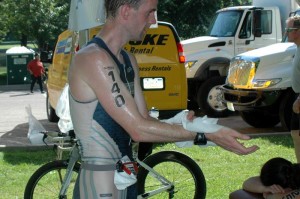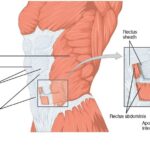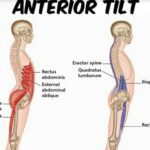This summer’s record breaking temperatures and seemingly endless heat waves have all of us making sure our reusable water bottles are filled and easily within arm’s reach. Everywhere we look, someone or something is constantly reminding us to stay hydrated and get our recommended daily “eight-glass” intake. All of which is somewhat true, but is it possible to drink so much water that you’re actually doing more harm than good? Yes. Hyponatremia, also known as ‘water intoxication’, is the result of drinking too much water, causing dangerously low sodium levels in the blood. Your cells maintain a specific concentration of sodium so when an excess amount of water enters the surrounding tissue, it draws the sodium out of the cell and disrupts the electrolyte balance. What is an electrolyte? Electrolytes are minerals that dissolve in water and carry electrical charges. Pure water does not conduct electricity, but water containing salt does. Since electrolytes have an electrical charge they can move through the cell membranes and thus carry other nutrients with them into the cells. They also carry messages along your nerves and help control things like your muscle function and heartbeat. Consuming too much water while not replenishing adequate amounts of sodium, will cause the body to malfunction, and possibly shut down completely.

Sodium is naturally removed from the body through urine and sweat which makes proper hydration critical for athletes and those who exercise, especially those performing at higher intensity levels for longer periods of time such as triathletes and marathoners. As noted earlier, water alone will not restore sodium levels and instead could be obtained through various sport drinks, gels, and salt tablets. A basic guide to give you an idea of how much fluid you should replenish during exercise is to first measure your personal sweat rate. Weigh yourself without clothes on prior to one hour of exercise and following your workout, strip down and weigh yourself again. (For best results, do not drink any fluids or use the bathroom during the workout.) Your weight loss is your sweat rate. For each kilogram of lost weight, you lose one liter of fluid. (For each pound lost, you lose 15.4 oz.) This will give you a general idea of how much fluid to intake during a similar future workout. Keep in mind your sweat rate will vary with environmental conditions such as humidity and temperature, and also how much salt each athlete sweats varies from person to person.
Signs and Symptoms:
The early warning signs of Hyponatremia are often subtle and resemble similarities of alcohol intoxication which include nausea, muscle cramps, disorientation, slurred speech, hallucinations and confusion. At this point, many athletes drink more water because they think they are dehydrated, however, water alone will increase the problem of hyponatremia. At the most extreme an athlete may experience seizures, coma, or death.
Treatment and Prevention:
In minor cases, hyponatremia may be treated by replenishing sodium levels in the blood with salty foods, sports drinks, or intravenously. More serious cases include prescribed diuretics or dialysis to decrease the extra water in the body, especially if the kidneys are not functioning properly. Alternating between water and electrolyte-rich supplements during physical activities, and also frequently monitoring your urine color (pale yellow) is the easiest way to prevent and gauge any signs of electrolyte imbalance.
References:
- http://www.mayoclinic.com/health/hyponatremia/DS00974/DSECTION=prevention
- http://www.nlm.nih.gov/medlineplus/ency/article/000394.htm
- http://www.medicinenet.com/hyponatremia/article.htm
- http://www.aafp.org/afp/2004/0515/p2387.html
- http://www.rice.edu/~jenky/sports/salt.html
- http://sportsmedicine.about.com/od/hydrationandfluid/a/Hyponatremia.htm
- http://www.aurorahealthcare.org/services/smi/chalk-talk/Hyponatremia.asp
- http://cjasn.asnjournals.org/content/2/1/151.full
- https://guenergy.com/expertise/learn-the-science/hyponatremia
- http://beta.active.com/nutrition/articles/cracking-the-code-on-sweat-rates
This article/video is for educational purposes only; do not attempt without your physician’s clearance. If you are in pain or injured, see your physician.
Copyright © Vidal Sports LLC 2018







